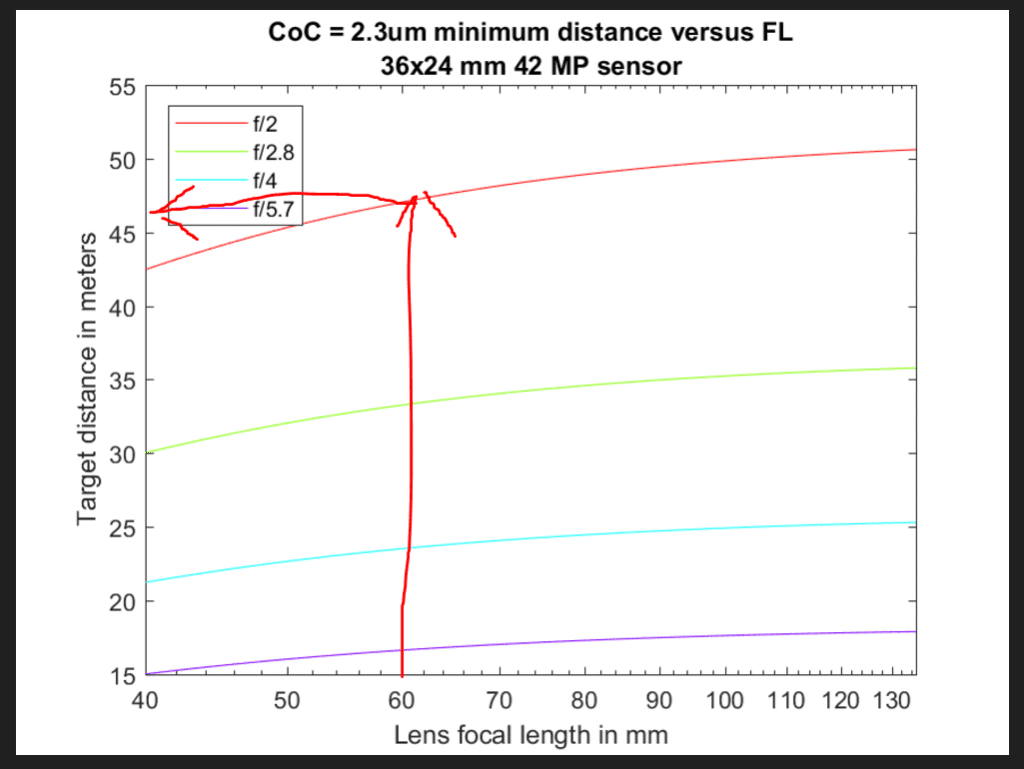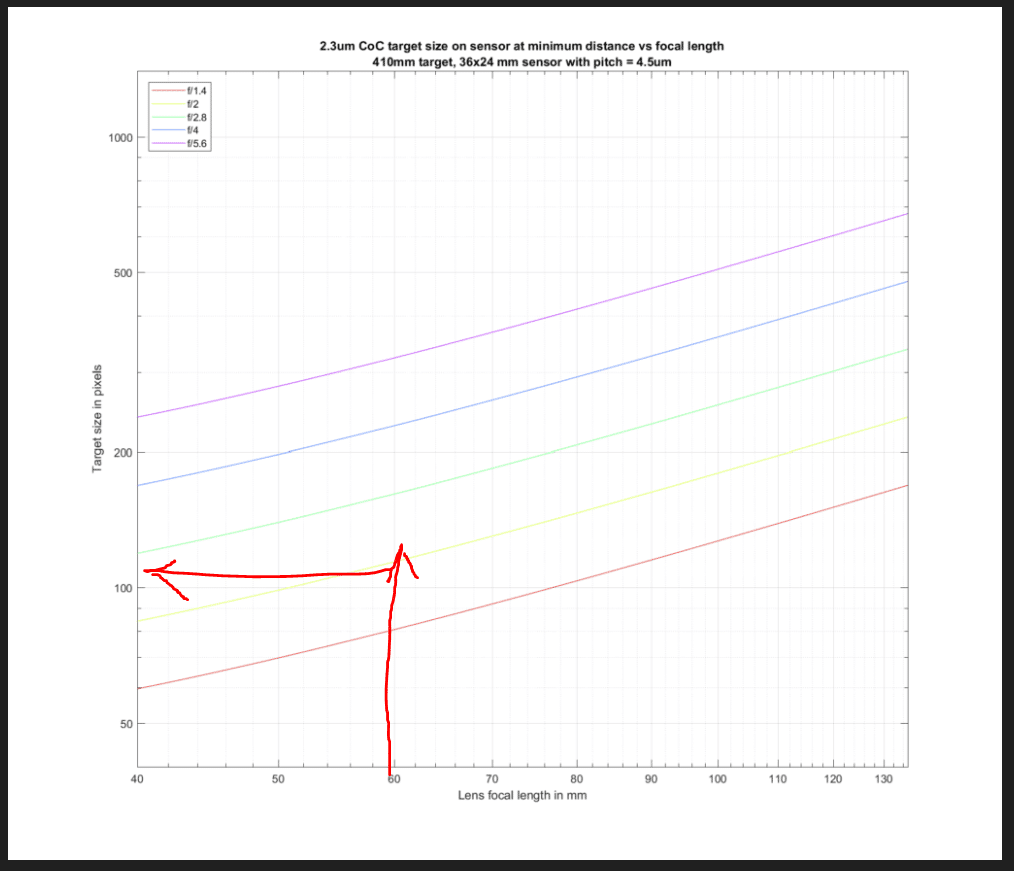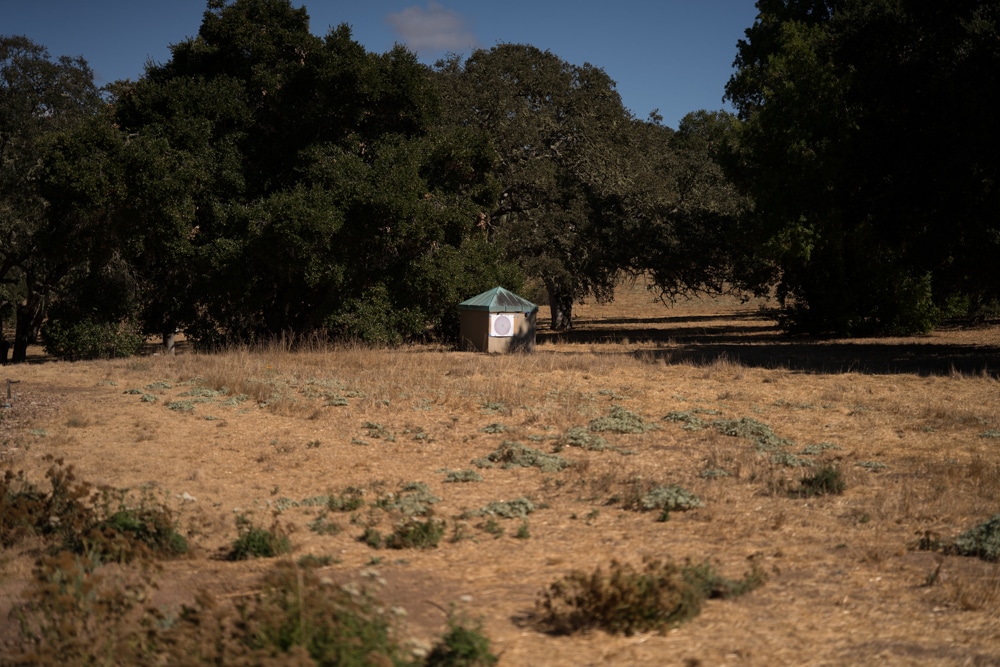On this page, I show a test of a Voigtlander 65 mm f/2 Apo-Lanthar lens on a Sony alpha 7R Mark II (a7RII) body. The lens turned out to be good,
We want to test the lens wide open. We consult the minimum distance chart:
At f/2, we need to be at least 46 meters away. I set up at 49 meters, with EFCS off, ISO 100, manual focusing, IBIS off, and a shutter speed of 1/8000.
Checking the target size:
We can see that a 410 mm target will be a bit over 100 pixels on the sensor. That’s acceptable, but a bit small. I used a 22.5 inch target.
It was windy and the easel kept blowing over, so I taped the target to the side of the pumphouse. I lined up quite a bit off perpendicular. As you’ll see, that didn’t hurt the test.
All the crop I’ll show you were originally 184×174. They are enlarged for this post.
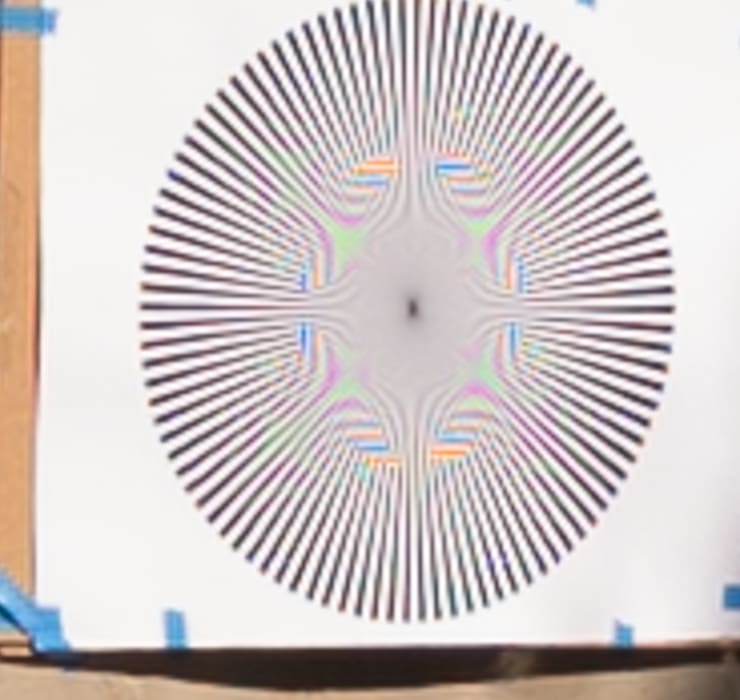
Very sharp. The target isn’t round because of the camera not being perpendicular to it. The ellipsoidal shape of the target means that the east-west spokes are further apart than the north-south ones, but that doesn’t seem to affect the symmetry of the false color and aliasing much. There is enough of both to indicate that the camera was well focused. I took three series, and they were all about the same, except for the last one where I must have touched the focus ring two-thirds of the way through.
If we consider the images in opposite pairs we can look for differences that aren’t radially symmetric. If sufficiently bad, these departures from symmetry are indicators of improper assembly.
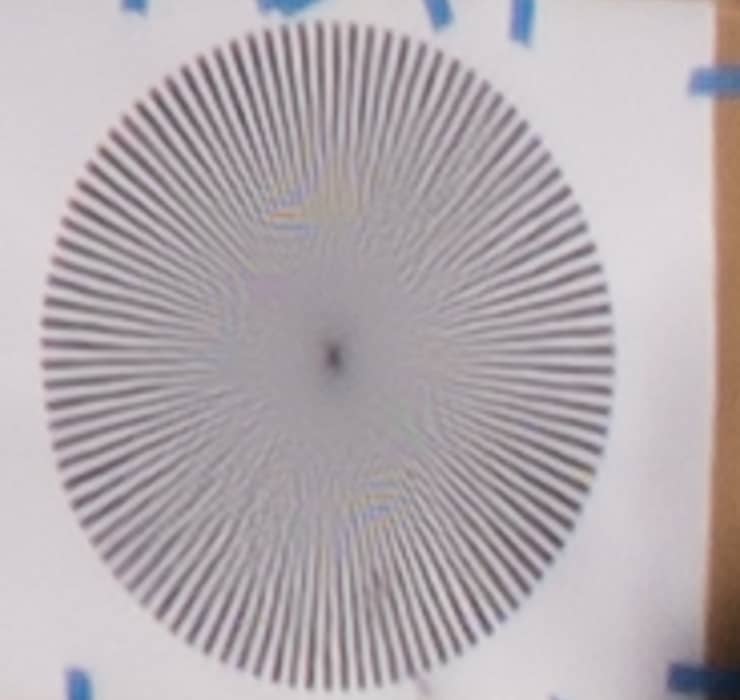
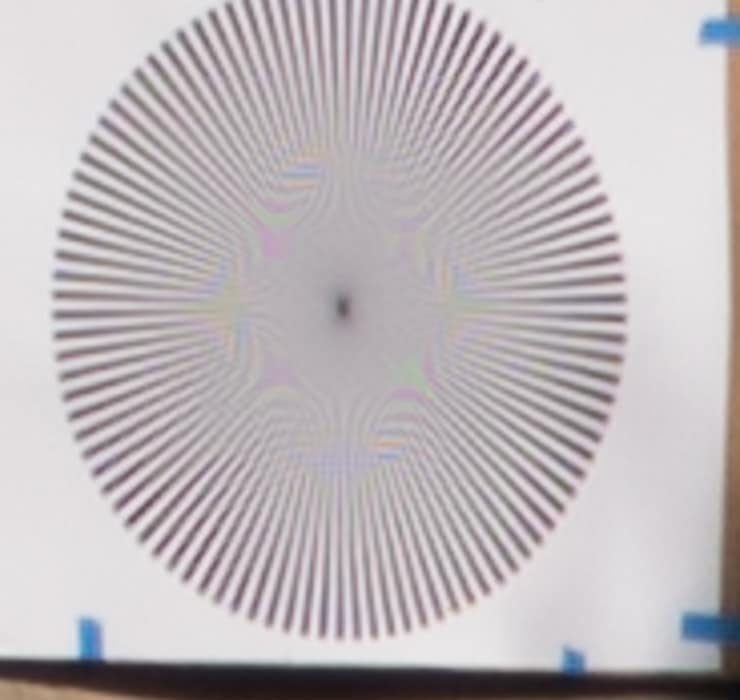
These opposed corners are plenty sharp for a macro lens at distance wide open. There is some aliasing. The upper left is very slightly softer than the lower right.
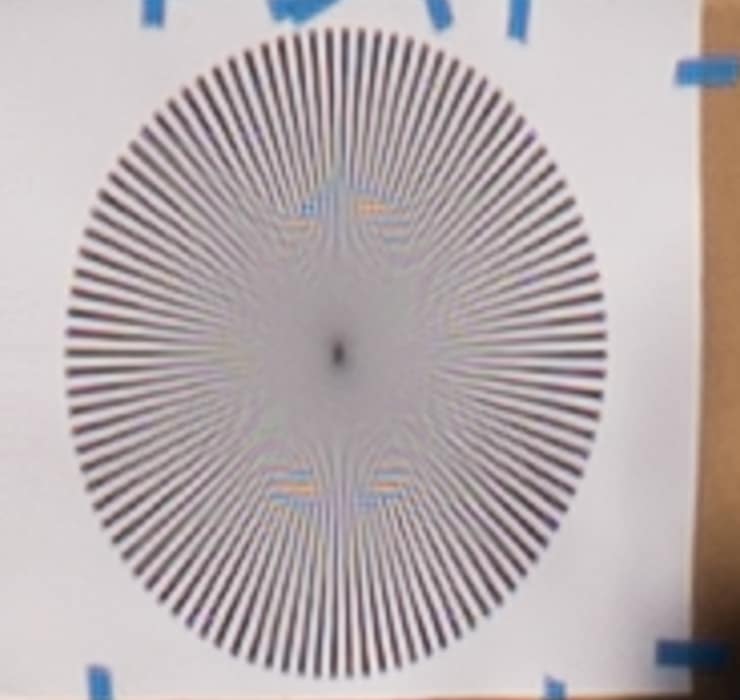
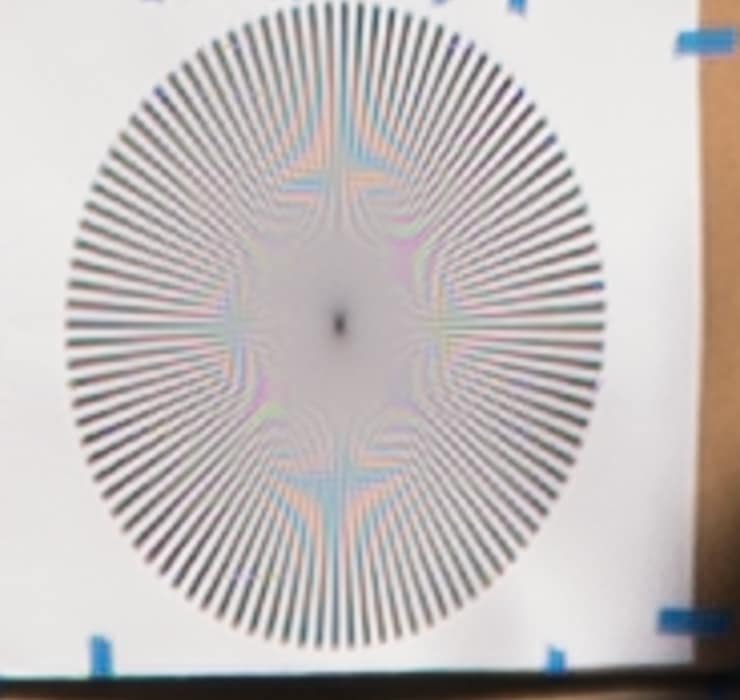
The bottom is slightly sharper than the top. Both are quite sharp.
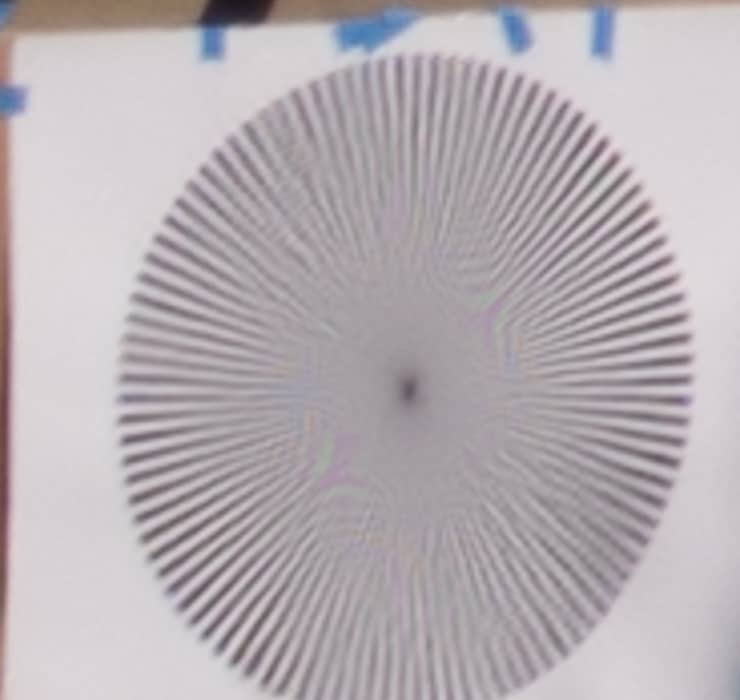
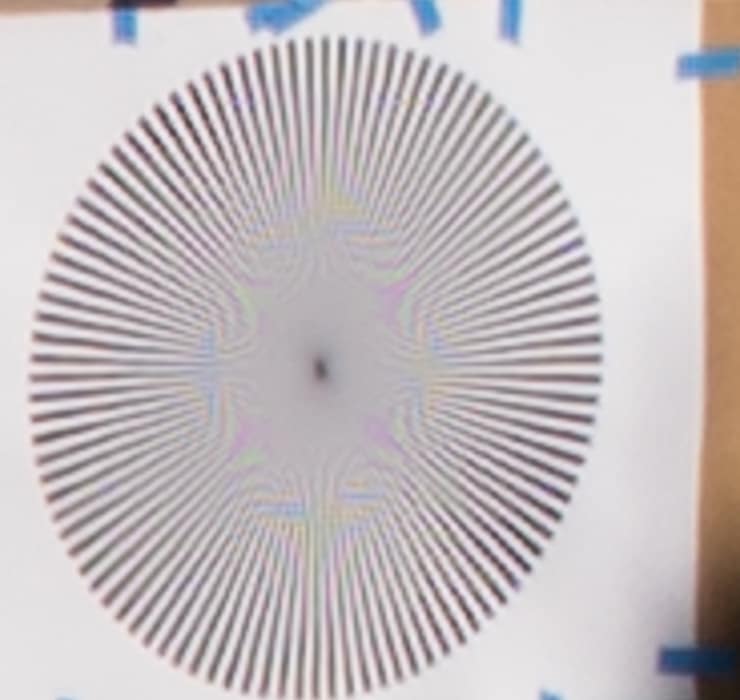
The bottom is slightly sharper.
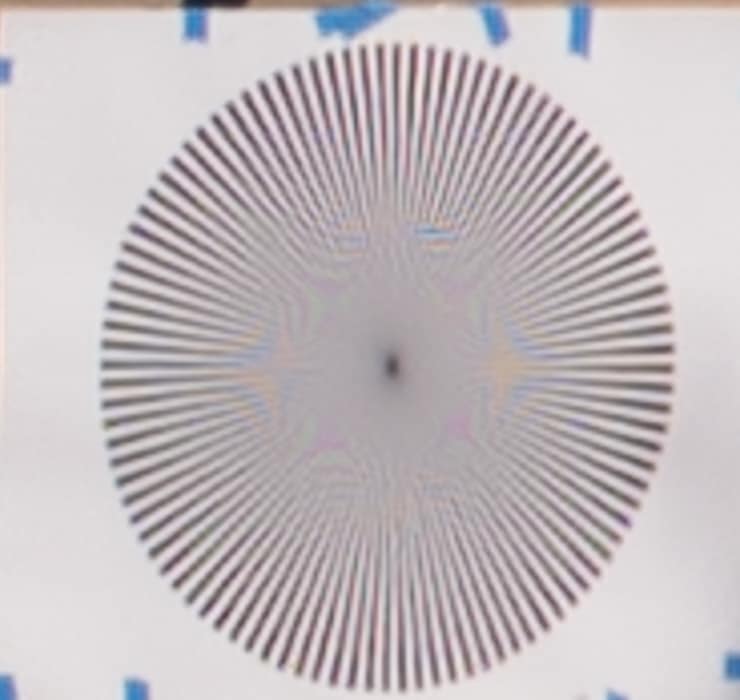
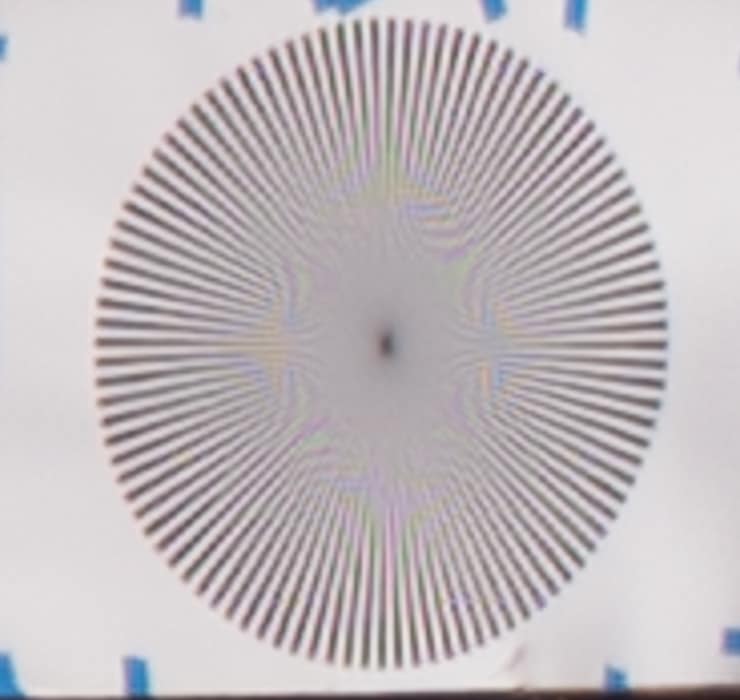
The left is a little sharper.
None of these small differences are anything to worry about.
